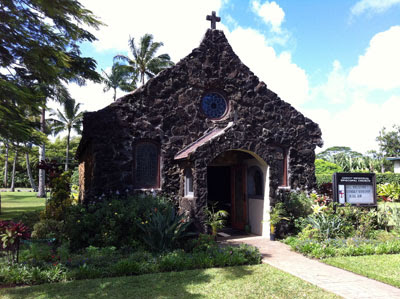Just as Art Deco design had its genesis in earlier arts and motifs from a variety of media, so too did the sleek curvilinear designs of the 1950s era. Mid-Century Modern designs, aka Fifties Modern, grew out of the aerodynamic designs of jet aircraft and the smooth, curved dinnerware of Russel Wright and Eva Zeisel. Both Wright and Zeisel introduced dinnerware lines in the 1940s that eschewed the formal and busy decoration of the thirties. They both relied on the gentle curves of the pieces to define the motif. The decoration was the surface. Plain and simple.
 |
| Russel Wright American Modern Dinnerware |
 |
| Eva Zeisel Teapot and Cup |
Mid-Century Modern design at its iconic best is found in the designs of husband and wife team Ray and Charles Eames. They pushed the new age of visual form to new heights with their Fiberglass Chair (introduced to the world by Herman Miller in the early 1950s) and the Eames Lounge Chair (introduced in 1956). The world design community was wowed with a whole new look in
furniture. Lean and modern. Sleek, sophisticated and simple.
Beautifully functional.
 |
| Eames Fiberglass Chair |
 |
| Eames Lounge Chair and Ottoman |
The revolution of shape and form was seen in new buildings of the 1950s. The greatest American architect of the time, Frank Lloyd Wright, rebuilt his reputation by moving beyond his Arts and Crafts roots and his Prairie houses to embrace the new modern movement. While he still clung to his mantra of organic design, he created architectural masterpieces that emphasized broad, curved surfaces. The Guggenheim Museum in New York City (1959) and Marin County Civic Center (1960-62) are two fantastic examples of Mid-Century Modern design in architecture.
 |
| Guggenheim Museum exterior |
 |
| Guggenheim Museum looking up inside the spiral inner space |
 |
| Marin County Civic Center |
 |
| Marin County Civic Center |
The architectural exemplification of this new modern design school can also be seen in the main terminal of the Dulles Airport (dedicated in 1962). The architect
of the Main Terminal at Dulles, Eero Saarinen, did not want to
design an ordinary airport. His main goal was to find “the soul of the
Airport.” The soaring roofline, broad curved surfaces and upswept wings of the roof capture the essence of flying in the age of jet aircraft.
 |
| Dulles Airport Main Terminal |
Maybe the most outlandish application of the modern design motif can be seen in the automobiles of the late 1950s ... broad, sleek, long and terminated with fins.
 |
| 1959 Cadillac Tail Fins |
Mid-Century Modern jewelry is in some ways a combination of a revival of the Art Deco motifs, a recollection of the Arts and Crafts designs of Georg Jensen and the influence of the new modern design. As with the Eames furniture, the Fifties Modern jewelry was sleek, sophisticated and simple.
 |
| Georg Jensen Brooch designed by Henning Koppel |
 |
| Georg Jensen Pendant designed by Nanna Ditze |
The bling of gem covered brooches was replaced with shiney, smooth, curved surfaces. The compact, uber-decorated jewelry of the 1930s and 1940s gave way to sleek lines and openness in the design. Silver and copper were the metals of choice, although gold and platinum were also used in high end pieces. But this design trend was not about fine jewelry or baubles for the elite. With the emphasis on form and surface, costume jewelry designers could create fantastic pieces for everyone.
Some of the earlier jewelry in the "modern" genre came from the Taxco School, lead by William Spratling. There they combined traditional pre-Columbian motifs with modern lines and surfaces.
 |
| Spratling Pyramids Bracelet in Silver combines the modern display of surfaces with the influence of pre-Columbian architecture ($850.00) |
 |
| Erika Hult de Corral, who uses the logo RIC, designed this Beautiful Brooch ($165.00) |
Silver was not the only metal in use by the Taxco School. Francisco Rebajes is renown for his fantastic modern copper pieces.
 |
| Rebajes Copper Musical Brooch |
In American mid-century jewelry, Coro was one of the leaders in beautiful copper and silver based pieces. In the 1940s most metals were under strict rationing, or were prohibited from use by commercial enterprises, as these metals were needed for the war effort. So even costume jewelers turned from white metal or pot metal to silver for their designs.
Copper jewelry by Renoir was
manufactured in California by Jerry Fels and his partners. They made Renoir (copper pieces without enamel), Matisse (copper pieces with enamel) and Sauterne (a line of sterling silver pieces). Their signature design was this Painter's Palette set.
Most costume designers of the time created "modern" jewelry items during the late-1940s and 1950s. Here is a selection of some other items we have available at this time. These are available online, but you can also visit our Los Gatos shop to view these and other pieces in our collection.
 |
| WOW! This 1950s Gorgeous Copper and Lucite Jelly Belly Fish is probably by Coro, but is not marked ($125.00) |





























Comments
Post a Comment